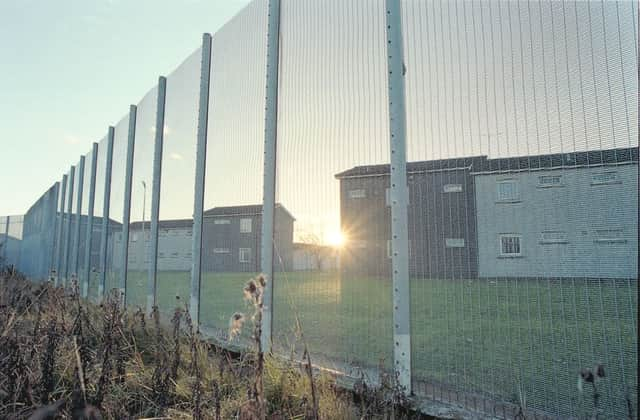Chris Marshall: Small steps on female offenders are at least a positive beginning


When newly appointed justice secretary Michael Matheson took the decision to scrap plans for a new women’s prison in January 2015, it was widely seen as an attempt to break from the past and the controversial reforms of his predecessor, Kenny MacAskill.
It is an indication of how far we’ve come in a short space of time that the idea of building a “super-jail” for female prisoners would today be unthinkable. Instead, it is the Scottish Government’s intention to close HMP Cornton Vale in Stirling and replace it with a smaller facility holding just 80 inmates.
Advertisement
Hide AdAdvertisement
Hide AdAlongside the new prison, there will be five smaller units dotted around the country as attempts are made to reduce the female prison population and break the depressing cycle of offending and imprisonment.
Yet if the report into Cornton Vale by HM Inspectorate of Prisons for Scotland is anything to go by, there is still work to be done.
Published today, the report warns the challenge of significantly reducing the number of women inmates is one for society as a whole.
There are currently around 300 women in custody in the Scottish prison system – around the same number as the capacity for the cancelled jail in Inverclyde.
However, under the Scottish Government’s revised plans, the new 80-capacity prison at Cornton Vale will be augmented by just an additional 100 places around the country.
Even if each facility is operating at its maximum capacity, that will still require a reduction of around 40 per cent in the number of female offenders behind bars.
In his report, David Strang, the chief inspector of prisons and a former chief constable of Lothian and Borders Police, warns that without a “significant reduction” in the number of women remanded or given a custodial sentence, it will be difficult for Cornton Vale to operate “as effectively as possible or desired”.
And he says the challenge is one for the justice system, councils, charities and the benefits system, not just the Scottish Prison Service.
Advertisement
Hide AdAdvertisement
Hide AdThe Scottish Government has already signalled its intention to back a presumption against short-term sentences, promoting community-based punishments instead.
But the problems of offending are more complicated and intractable than that, with every indication suggesting a sea change is needed in the way society as a whole approaches the issue of what drives people to commit low-level crime.
More also needs to be done to help reintegrate those released from prison back into society.
In his report, Mr Strang calls for more accommodation to be available for those recently released and highlights the need for appropriate support for addictions as well as mental and physical health issues.
The importance of early intervention to support those recently released and to prevent them from re-offending cannot be overstated.
When inspectors visited Cornton Vale last October there were 369 women in the prison estate. That figure has fallen since they completed their work, but there is still a way to go.
Much will need to change if we are to break the cycle which sees offenders – both male and female – end up behind bars time and time again.
However, early indications are that things are beginning to move in the right direction.